Latest posts by (see all)
- The Best Things to Do in Tulsa - June 26, 2020
- The Most Interesting Things to Do in Springfield Mo - June 15, 2020
- Best Things to Do in Salt Lake City - May 26, 2020
- 10 Best Websites for Playing Online Games - May 22, 2020
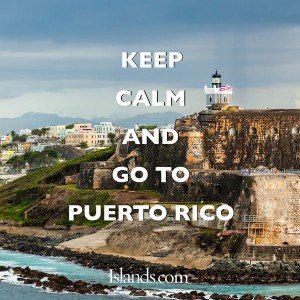 Puerto Rico is translated from Spanish as the “rich port”. And this name suits it. Puerto Rico is a place to rest for those who don’t like passive holidays. The island offers a huge amount of entertainment and recreational opportunities: historical sights, incredible wonders of nature, restaurants, shops, night clubs.
Puerto Rico is translated from Spanish as the “rich port”. And this name suits it. Puerto Rico is a place to rest for those who don’t like passive holidays. The island offers a huge amount of entertainment and recreational opportunities: historical sights, incredible wonders of nature, restaurants, shops, night clubs.
The island is suitable for family vacation and honeymoon as well as for a relaxing beach vacation. Each visitor will find something to his or her tastes in Puerto Rico.
Contents
- Place to visit number 1: San Juan
- Place to visit number 2: Viejo San Juan
- Place to visit number 3: Ponce
- Place to visit number 4: San Germán
- Place to visit number 5: Peninsula Cabo Rojo
- Place to visit number 6: Arecibo Observatory
- Place to visit number 7: The National Guard and Reserve
- Place to visit number 8: Rio Camuy Caves
- Place to visit number 9: Culebrita Island
- Place to visit number 10: National Reserve El Yunque
- Video
Place to visit number 1: San Juan
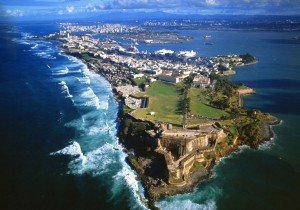 The capital of Puerto Rico is located on the shore of one of the best natural harbors in the Caribbean. Today the city combines has the following functions:
The capital of Puerto Rico is located on the shore of one of the best natural harbors in the Caribbean. Today the city combines has the following functions:
- the vibrant and modern capital,
- political and economic center of the island.
Its beaches are framed by a wall of high-rise buildings and trade center, which is traditional for all the capitals of the world, is adjacent to the historic core of the colonial Old Town. Founded in 1521, it is the second of the oldest American cities (after Cusco, Peru). For such an old city San Juan may seem quite young – no quarters crumbling buildings and narrow alleys, all of its historic buildings are well preserved until today and receive regular restoration.
Interesting: The ancient bridge is framed with quite modern shops and cafes, giving them new meaning.
Back
Place to visit number 2: Viejo San Juan
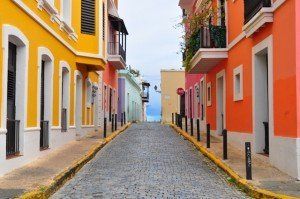 Old San Juan or Viejo San Juan is on the very tip of the peninsula of the same name, in the waters of the Atlantic outstanding long strip of irregular shape. It is here the first building were transferred from Kaparra in the future city, it is here, between the deep waters of the Bay of San Juan Bay and the open sea, ashore the first caravels loaded with New World treasures and it is here, at a comfortable Defense strip of land, the capital of the country appeared. The entire Old Town is literally saturated with buildings and structures XVI-XVII centuries, nowadays it is a national historic area and the main point of attraction for many tourists.
Old San Juan or Viejo San Juan is on the very tip of the peninsula of the same name, in the waters of the Atlantic outstanding long strip of irregular shape. It is here the first building were transferred from Kaparra in the future city, it is here, between the deep waters of the Bay of San Juan Bay and the open sea, ashore the first caravels loaded with New World treasures and it is here, at a comfortable Defense strip of land, the capital of the country appeared. The entire Old Town is literally saturated with buildings and structures XVI-XVII centuries, nowadays it is a national historic area and the main point of attraction for many tourists.
The Old Town is most similar to an open-air museum where there is a collection of the darkened buildings of the Spanish colonial era, and many of them, especially the area around the Plaza del Centenario Shinto, considered the best
preserved example of this style in the Western Hemisphere. Steep and narrow streets here are paved with smooth bars, known as “adekines” and pastel facades and balconies with wrought-iron grilles, entwined with flowering plants as though descended from the pages of the Spanish classics. Stone walls stretching across the north side of Viejo San Juan forming together with its forts powerful defensive system, was intended to protect the city from the raids of British, Dutch and French corsairs. Nowadays only the walls of La Muralla and ramparts of El Morro and San Cristobal have remained, however, this area is sufficient for the former greatness of this fortress evaluation.
In the north-west of the city, on the promontory of Punta del Moro, there is the most impressive sample of the Spanish fortification school – fort Fuerte San Felipe del Moro, guarding the entrance to San Juan Bay. This fortress is considered one of the largest and most advanced in the Caribbean Sea built by Spanish engineers for more than 200 years old – it was founded in 1539, and the last of its six storeys added two only in 1787.
This massive structure withstood countless attacks, including such well-known as:
- a fleet attack pirate Francis Drake in 1595,
- the attack of the Dutch fleet in 1625,
- fire guns across the US Atlantic fleet in 1898.
The majestic walls of the fort towering over the waters of the Atlantic by 42 meters, and in its depths there are numerous barracks, galleries, prison and fire positions, many of which are simply carved in the rock promontory.
Interesting: On the territory of El Morro there are regularly a huge number of exhibitions showing the role of Puerto Rico in the conquest of the New World.
Back
Place to visit number 3: Ponce
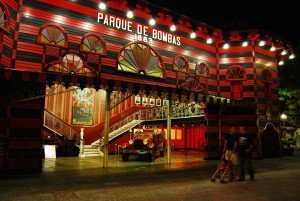 The second largest city in Puerto Rico, known as a major port since the end of the XVII century, lies on the southern coast of the country, between the chains of the Central Cordillera and the coast of the Caribbean Sea. It was founded by Spanish settlers in 1692. Today, the central part of the city has been declared a “national treasure” – it consists entirely of:
The second largest city in Puerto Rico, known as a major port since the end of the XVII century, lies on the southern coast of the country, between the chains of the Central Cordillera and the coast of the Caribbean Sea. It was founded by Spanish settlers in 1692. Today, the central part of the city has been declared a “national treasure” – it consists entirely of:
- squares,
- churches,
- beautifully decorated colonial buildings,
- magnificent fountains of the colonial period.
Here you will see one of the oldest fire stations in the world.
Among the main attractions in Ponce there are such as the majestic Cathedral Kateral La Guadalupe (1660, rebuilt in 1835, 1911 and 1930.) That dominates the urban landscape in the area of Las Delicias, nearby De Bombas (a small park in the colonial style), Casa Armstrong-Poventud (1900, here there is the Institute of culture), the Casa Alkalda and the neo-classical building of the Historical museum of Ponce.
Also noteworthy tourist attractions there are the following:
- excellent Art Museum of Ponce, considered one of the best in the Caribbean (more than a thousand paintings, 800 sculptures and 500 prints, reflecting the history of five centuries of Western art),
- Music of Puerto Rico Museum,
- Sports Museum of Puerto Rico on Rutherford Street, built as a medieval castle,
- a Spanish mansion Serales (1930, now here is the Museum of the family Serales)
- and, of course, Ceremonial park Tibbs in Guayama (1 km north of the city center), which is a carefully restored Indian village with its own archaeological site, botanical garden, a small museum and exhibition hall, where there are unique pieces of ancient Indian cultures.
Interesting: The town is often called the Pearl of the South.
Back
Place to visit number 4: San Germán
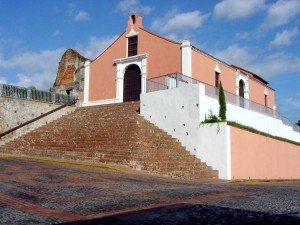 Between Ponce and Mayaguez, in the gentle hills of the south-western part of the country, you can see the picturesque city of San Germán – the oldest settlement in Puerto Rico after San Juan.
Between Ponce and Mayaguez, in the gentle hills of the south-western part of the country, you can see the picturesque city of San Germán – the oldest settlement in Puerto Rico after San Juan.
The main attraction of the city – the church of La Capilla Porta Coeli, or simply Porta Coeli (“Heaven’s Gate”), built by Dominican monks in 1606 (one of the oldest churches in the New World) that has long been used as a city prison. The church has been restored and has kept in its aisles a fine collection of religious art XVI-XIX centuries, including the famous altarpiece work of Jose Campeche – the
first and, as many believe, the most famous country artist. Also there are numerous attractive old quarters of the center:
- the impressive church of San Germán de Auherre,
- Museum of Religious Art in Porta Coeli,
- Puerto Rico Interamerikan University,
- the Museum of Alfredo Ramirez de Arellano-and-Rosello.
North-east of San Germán is another famous attraction of the island – Hacienda Buena Vista. Beautiful two-storey house of the hacienda (1833) is a once-a major producer of coffee, grains and vegetables in the region was renovated in 1984 and now turned into a real open air museum where you can see the life of the coffee plantations of the XIX century, the impressive and still active agricultural machinery and furnishings of the period houses of both the owner of the hacienda and its employees.
Interesting: The relative isolation of this place helped to preserve the unique architecture of the colonial era: many old houses, tree-lined boulevards, small areas, which have been included in the UNESCO World Heritage List.
Back
Place to visit number 5: Peninsula Cabo Rojo
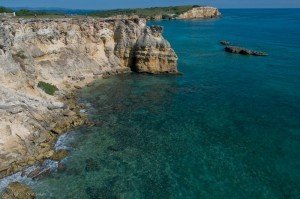 Multicolored limestone headland of Cabo Rojo is also known as Punta Hakey, which forms the south-western tip of the island. Towering on it lighthouse Faro de Cabo Rojo (1881) is in fact a large demonstration area, from which walls there is the majestic view:
Multicolored limestone headland of Cabo Rojo is also known as Punta Hakey, which forms the south-western tip of the island. Towering on it lighthouse Faro de Cabo Rojo (1881) is in fact a large demonstration area, from which walls there is the majestic view:
- The blue waters of the Caribbean sea,
- jagged cliffs,
- sandy coves,
- surf coastline.
Here you can walk all day long, discovering more and more new objects – the salt lakes and salt piles ready for shipment, groves of shrubs, mangrove swamps and the wind creeping on the trees, and above it all – blue sky.
To the east of Cabo Rojo there is a long Phosphorescent Bay, which is an amazing bay, gained worldwide fame for its luminous waters. Bioluminescence of microscopic organisms that inhabit the waters of the bay is so strong that almost any movement, whether it is swimming in the depth of the fish or passing across
the surface of the boat, causes a real firework of a myriad of tiny living lights. By itself, bioluminescence is nothing unique – almost all of the water of the southern seas of the Earth is able to show at least a grand spectacle.
Interesting: This bay is the only place on the planet where you can see the glow of the sea every night – especially on moonless winter nights. Also, this phenomenon can be seen in the bays of Vieques and Fajardo in the north-eastern coast of the island.
Back
Place to visit number 6: Arecibo Observatory
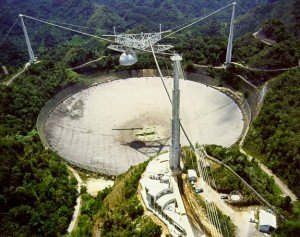 The stunning mountains of the north-western part of Puerto Rico have the largest radio telescope in the world, which has become one of the attractions of the island long time ago. Funded by Cornwall University and the US government, it was used to search for extraterrestrial life. Also there is the first-class Museum of Science and Space, which is located directly beneath the impressive telescope, which diameter is 305 meters.
The stunning mountains of the north-western part of Puerto Rico have the largest radio telescope in the world, which has become one of the attractions of the island long time ago. Funded by Cornwall University and the US government, it was used to search for extraterrestrial life. Also there is the first-class Museum of Science and Space, which is located directly beneath the impressive telescope, which diameter is 305 meters.
To the south of Arecibo there are caves that are related to Rio Kamay system (268 acres of underground galleries and tunnels – third largest karst area in the world), including the famous Cave Cathedral Cave. A few more can be found south of the Ceremonial Park of Taino Indians, which facilities have an age of about 800 years. And if you turn on the way to Utuado, you can enter the territory of another portion of the ancient Indian cultures – Ceremonial Park Caguán where several dozen of enormous ritual vessels were found. There were numerous petroglyphs and various ceremonial objects.
Little Caguán Museum presents:
- exhibition of Native American artifacts,
- various archaeological exhibits,
- and even a small botanical garden, featuring plants used by the Taino.
Interesting: Nearby there is the Mystic River Taino – Tanama, the most beautiful place of primeval karst country, past the cave Cueva del Arco and Ventana, and therefore very popular with kayakers and rafters.
Back
Place to visit number 7: The National Guard and Reserve
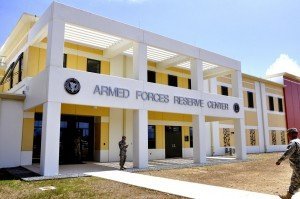 The area of Puerto Rico, which is currently under the protection of the United States of America, had seen various invaders who claimed the winning point in the strategic waters of the Caribbean after the discovery of the New World by Christopher Columbus. This island was attacked by pirates of various nationalities
The area of Puerto Rico, which is currently under the protection of the United States of America, had seen various invaders who claimed the winning point in the strategic waters of the Caribbean after the discovery of the New World by Christopher Columbus. This island was attacked by pirates of various nationalities
and colors, regular squadron of ships, so the Spanish authorities were forced to finance and supervise the construction of a huge number of defensive fortifications like Fort San Jeronimo del Boqueron and de San Cristobal. It is to this category of buildings you can relate the National Guard and Reserve in San Juan, the capital of the Spanish vice-governor of Puerto Rico.
It was here, according to the author of the famous pirate saga “Pirates of the Caribbean” where Jack Sparrow wanted to come – and if this character is not real, wealthy weapons and artillery reserve, located there was the subject of dreams almost of all the buccaneers who sailed in these waters. Behind thick walls arsenal transfer point was built, where all the weapons were distributed coming from the Old World, and here you could find the most modern for its time, guns and explosives compositions.
The building itself was built in the mid-16th century, after which the building was repeatedly reconstructed – the need to restructure and increase the thickness of the walls explains the creation of advanced weapon systems, capable to destroy these fortifications.
Historical records specify that for its intended purpose the National Guard and Reserve (San Juan, Puerto Rico) was used until the middle of the last century – even after the island became a US protectorate and piracy in the local waters an arsenal of weapons was used to destroy German submarines in the Kriegsmarine during World War II, and only in the sixties this place was turned into a museum. Its exposure is placed behind the thick walls of the fort, dedicated to the guns that were used in the area of the New World.
Interesting: In addition, some walls place a variety of entertainment, popular with both locals and foreign tourists.
Back
Place to visit number 8: Rio Camuy Caves
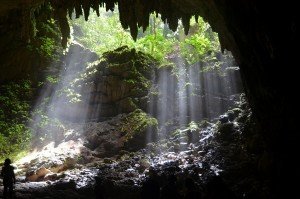 The famous caves of Puerto Rico are one of the largest cave systems in the Western Hemisphere and the third cave system in the world. There are:
The famous caves of Puerto Rico are one of the largest cave systems in the Western Hemisphere and the third cave system in the world. There are:
- picnic areas,
- walking trails,
- walking train,
- an exhibition hall,
- a souvenir shop.
Camuy Caves are situated in the park The Parque de las Cavernas del Río Camuy. Caves are formed by limestone rocks and are replete with many underground rivers and springs. Camuy Caves were first discovered in 1958. Although there is evidence that these caves were visited earlier by local Taino Indians. The cave complex stretches over 10 miles and a population of 228 caves and 17 inputs (although there is an assumption that the number of caves can be up to 800). The depth of the caves reaches 180 meters. On the territory of the caves there are 13 species of bats and in the underground river several species of fish found.
Interesting: The tour through the caves passes through underground ravines along the edge of the underground river. Since 2010 there are weekly night tours in the caves.
Back
Place to visit number 9: Culebrita Island
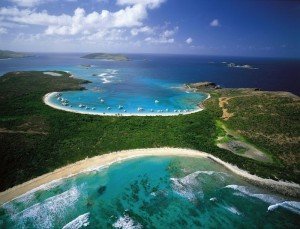 The island is located in the north-west of Puerto Rico. Culebrita is a small coral island that stretches only 1 mile in length. There are six beaches. Among attractions for tourists there are the beaches of the island:
The island is located in the north-west of Puerto Rico. Culebrita is a small coral island that stretches only 1 mile in length. There are six beaches. Among attractions for tourists there are the beaches of the island:
- Flamenco Beach: The white sandy beaches are washed by the clear water with a blue tint creating an image of a tropical paradise.
- Playa Tortuga: One of the main attractions of the island there is the beach of Turtle Beach. The beach is named after the sea turtles that use its sand to lay their eggs. At the top of the island there is the lighthouse, the construction of which lasted from 1882 to 1886. The lighthouse was one of the oldest operating lighthouses in the US until finally it was not closed in 1975.
Interesting: In 1981, the lighthouse was listed on the National Register of Historic Places. It is possible to get to the island by water taxi.
Back
Place to visit number 10: National Reserve El Yunque
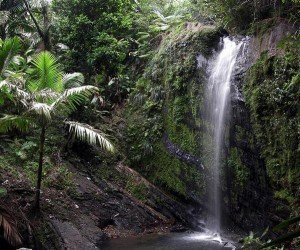 National Reserve is also known as the Caribbean National Forest. El Yunque is one of the largest reserves of tropical forests, preserving intact primeval nature of Puerto Rico. It got its name in honor of the Indian spirit Yuquiye, which means “Forest of Cloud”. The total area of the reserve is 11 270 hectare. The reserve was founded in 1903, although part of its territory has been under protection since the second half of the XIX century. The reserve is located in a two-hour drive from San Juan. There are more than 240 species of trees, plants and animals, which are
National Reserve is also known as the Caribbean National Forest. El Yunque is one of the largest reserves of tropical forests, preserving intact primeval nature of Puerto Rico. It got its name in honor of the Indian spirit Yuquiye, which means “Forest of Cloud”. The total area of the reserve is 11 270 hectare. The reserve was founded in 1903, although part of its territory has been under protection since the second half of the XIX century. The reserve is located in a two-hour drive from San Juan. There are more than 240 species of trees, plants and animals, which are
protected by the Government of Puerto Rico, as they are considered on the verge of extinction. Here you can:
- take a walk along the paths of the rainforest,
- visit a waterfall,
- have a good rest.
Interesting: This National Reserve is a perfect tourist destination for families and nature lovers.